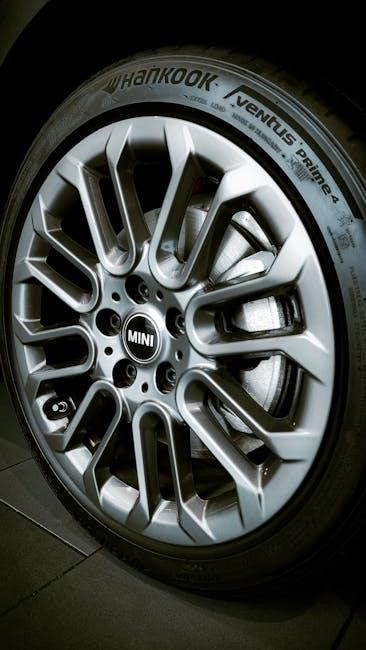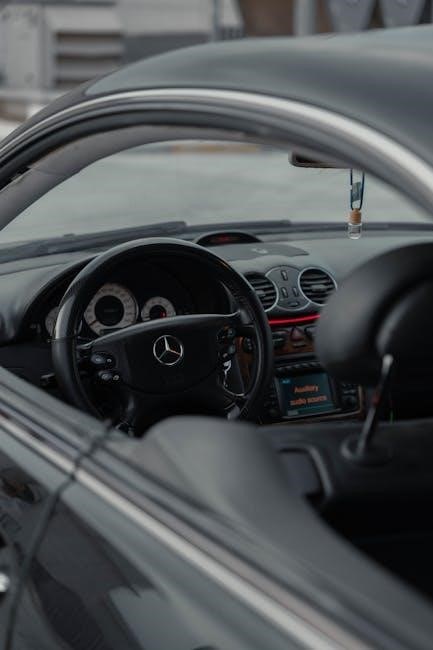hero wars guide
Hero Wars is an epic fantasy RPG with strategic battles, offering a variety of heroes, each with unique roles like Warriors, Marksmen, and Healers. Titan battles add depth, requiring tailored strategies. Regular updates, events, and free resources help players progress. Mastering hero abilities and optimizing gear is key to success in this engaging mobile game.
1.1 Overview of the Game
Hero Wars is an engaging mobile RPG with strategic battles, offering a mix of hero collection, character progression, and tactical combat. Players assemble teams of unique heroes, each with distinct roles like Warriors, Marksmen, and Healers. The game features various modes, including Campaign, Arena, and Tower of Trials, providing diverse challenges. Titans, powerful beings, add another layer of strategy, requiring specific approaches. Progression is supported by daily rewards, events, and resource management. With regular updates and a strong focus on hero customization, Hero Wars appeals to both casual and competitive players, offering depth and accessibility in its fantasy-themed universe.
1.2 Key Features and Gameplay Mechanics
Hero Wars offers a variety of heroes with unique roles, such as Warriors for single-target damage and Marksmen for area-of-effect attacks. Healers provide crucial support, while Hybrid heroes balance damage and healing. Titans introduce strategic depth, requiring tailored approaches. The game features multiple modes, including Campaign for story progression, Arena for PvP battles, and Tower of Trials for challenging levels. Battles demand tactical skill, with hero abilities and synergies playing a central role. Artifacts and gear customization allow for personalized playstyles, while resource management and daily rewards support progression. Regular updates and events keep the gameplay fresh and engaging for players.

Hero Types and Roles
Hero Wars features diverse hero types, each with unique roles. Warriors excel at single-target damage, while Marksmen deliver area-of-effect attacks. Healers provide essential support, restoring health, and Hybrid heroes balance damage and healing, offering versatility in combat. Understanding these roles is crucial for building effective teams and executing strategies.
2.1 Warriors: Single-Target Damage Dealers
Warriors are specialized heroes who excel at dealing high damage to single targets. They are ideal for taking down tough enemies quickly, making them invaluable in prolonged battles. Warriors often have abilities that increase their attack power or reduce enemy defenses, enhancing their effectiveness. However, they may struggle against multiple opponents or teams with strong healing support. Properly equipping and upgrading Warriors is crucial to maximize their impact. Pairing them with healers or crowd control heroes can mitigate their vulnerabilities. Understanding their strengths and weaknesses is key to leveraging their power in various combat scenarios.
2.2 Marksmen: Area of Effect (AoE) Damage Dealers
Marksmen are heroes who specialize in dealing damage to multiple enemies simultaneously through Area of Effect (AoE) attacks. Their abilities allow them to clear waves of enemies quickly and control crowded battlefields. Marksmen are particularly effective in scenarios with multiple targets, making them invaluable in certain PvE modes and PvP battles. However, their damage output may be less focused compared to single-target dealers like Warriors. Proper positioning and timing are crucial for maximizing their AoE potential. Pairing Marksmen with crowd control heroes can enhance their effectiveness, ensuring enemies stay within their damage radius for optimal impact.
2.3 Healers: Support Characters
Healers are essential support characters in Hero Wars, focusing on restoring health to their allies. They ensure team survival in intense battles, making them crucial for long-term success. Healers can either specialize in pure healing or combine healing with damage, offering versatility. Heroes like Maya exemplify the hybrid type, blending support with offensive capabilities. Pure healers, however, prioritize keeping the team alive without dealing damage. Balancing a team with healers is vital, as they often determine the outcome of prolonged fights. Their abilities can turn the tide in both PvE and PvP modes, making them indispensable in strategic team compositions.

2.4 Hybrid Heroes: Balancing Damage and Healing
Hybrid Heroes in Hero Wars combine damage dealing with healing, offering versatility in combat. These characters, like Maya, can adapt to various situations, making them valuable in both offensive and defensive strategies. While they may not excel in pure healing or damage, their dual role enhances team flexibility. Hybrids often serve as a bridge between damage dealers and healers, ensuring sustained pressure while keeping allies alive. Their abilities make them indispensable in competitive modes, allowing for dynamic team compositions. However, their balanced nature means they may lack the specialized strength of pure healers or damage-focused heroes.

Titan Overview
Titans are powerful beings in Hero Wars, exclusively used in Titan battles. They can only face other Titans, requiring unique strategies. Upgradable with Titan Potions, they add depth to gameplay.
3.1 Titan Types and Their Roles
In Hero Wars, Titans are categorized into distinct types, each serving unique roles. Offensive Titans excel at dealing massive damage, while Defensive Titans specialize in protecting allies. Support Titans enhance team capabilities through buffs. Each Titan type requires tailored strategies, as their strengths and weaknesses vary. Understanding their roles is crucial for success in Titan battles. Players must adapt their approaches based on the Titan they face, ensuring effective counterplays. This diversity adds strategic depth to the game, making Titan battles both challenging and rewarding. Proper utilization of Titan types can turn the tide in favor of the player.
3.2 Upgrading and Enhancing Titans
Upgrading Titans in Hero Wars is essential for maximizing their potential. Players can use Titan Potions to enhance their power, while Titan Essences unlock new abilities. Evolution Materials can further boost stats, making Titans more formidable. Regular upgrades ensure Titans remain competitive in battles. Strategic resource management is key, as upgrading requires specific items. Prioritizing Titan upgrades based on their role in your team ensures optimal performance. Enhanced Titans offer better damage output, defensive capabilities, or support, depending on their type. Investing in upgrades is crucial for progressing through challenging content and securing victories in Titan battles.
Team Composition
Building a balanced team is crucial in Hero Wars. Combine Warriors, Marksmen, and Healers for synergy. Identify opponents’ weaknesses and use counters to gain an edge in battles.
4.1 Building a Balanced Team
A well-rounded team in Hero Wars combines Warriors, Marksmen, and Healers for optimal synergy. Warriors excel at single-target damage, while Marksmen provide AoE damage. Healers sustain the team, with some also dealing damage. Hybrid heroes offer flexibility, balancing offense and support. To build a balanced team, focus on complementary abilities and counters. Start with campaign heroes, as they are versatile. Upgrade and equip them strategically to enhance their roles. Synergy between heroes is key to overcoming challenges and dominating battles. A balanced team ensures sustained damage output, survivability, and adaptability in various combat scenarios.
4.2 Synergy Between Heroes
Synergy between heroes is crucial for success in Hero Wars. Pairing heroes with complementary abilities enhances team performance. For example, combining a Warrior with a Healer ensures sustained damage output and survivability. Marksmen benefit from crowd control heroes like Astaroth, who can immobilize enemies. Additionally, heroes like Ziri can amplify allies’ damage, creating powerful burst combos. Experimenting with different lineups helps identify strong synergies. Focus on abilities that set up kills or protect teammates. Building a team with high synergy transforms individual strengths into a formidable force, making challenging battles more manageable and increasing overall victory potential in both PvE and PvP modes.
Countering Specific Heroes
Identifying weaknesses in opponents is key to countering specific heroes effectively. Using targeted abilities and heroes can turn the tide of battle in your favor. Stay adaptable to maximize your chances of success.
5.1 Identifying Weaknesses in Opponents
Identifying weaknesses in opponents is crucial for effective countering. Analyze each hero’s role and abilities to exploit their limitations. For example, Warriors focus on single targets, while Marksmen excel at AoE damage but may lack defense. Healers are vital, so targeting them can cripple enemy teams. Observe skill cooldowns and patterns to anticipate vulnerabilities. Understanding hero types—like Hybrid Heroes balancing damage and healing—helps tailor strategies. Use this knowledge to select counters that neutralize their strengths and capitalize on their weaknesses, ensuring a strategic advantage in battles.
5.2 Effective Counter Strategies
Effective counter strategies involve targeting opponents’ weaknesses. Focus on neutralizing key heroes, such as healers or high-damage dealers, to disrupt enemy synergy. Use control abilities like stuns or silences to disable dangerous enemies. For example, counter a Warrior with a Hybrid Hero that can both heal and deal damage. Against Marksmen, deploy heroes with area denial or high mobility. Utilize Titan abilities to turn the tide in battles. Always adapt your team composition based on the opponent’s lineup and exploit gaps in their strategy. This proactive approach ensures victory in competitive matchups.

Hero Upgrades and Enhancements
Hero upgrades enhance combat effectiveness through equipment, artifacts, and skill mastery. Equip gear to boost stats, use artifacts for unique effects, and upgrade skills for maximum impact in battles.
6.1 Equipment and Gear
Equipment and gear are essential for enhancing hero stats and abilities. Each hero can equip specific items like weapons, armor, and accessories, which boost their power and effectiveness in battles. Gear can be obtained through various means, such as completing challenges, participating in events, or purchasing from the in-game shop. Upgrading gear using resources like gold or enhancement materials further increases its potency. Properly equipping and upgrading gear ensures heroes perform optimally, making them more formidable in both PvE and PvP modes. Prioritizing gear upgrades for key heroes can significantly strengthen your team composition and overall gameplay performance.
6.2 Artifacts and Their Effects
Artifacts are powerful items that provide unique effects, enhancing hero abilities and overall team performance. They can be equipped to heroes to grant bonuses such as increased damage, healing, or defensive capabilities. Each artifact has specific effects, ranging from boosting elemental damage to providing crowd control immunity. Artifacts can be obtained through various in-game activities, including events, challenges, and rewards. Upgrading artifacts using resources like artifact shards or essence further amplifies their effects. Strategically equipping artifacts tailored to your heroes’ roles ensures optimal synergy and enhances their effectiveness in battles, making them a crucial part of team composition and strategy.
6.3 Skill Upgrades and Mastery
Skill upgrades and mastery are essential for maximizing hero potential in Hero Wars. Upgrading skills enhances their effectiveness, turning the tide in battles. Skills can be upgraded using resources like skill tomes or essence, with each level increasing damage, healing, or utility. Mastery involves unlocking advanced tiers, granting powerful bonuses such as enhanced damage, improved healing, or crowd control. Prioritizing skill upgrades and mastery is crucial for progression, especially in challenging modes like the Tower of Trials. Investing in skills ensures heroes perform optimally, making them indispensable in team compositions and strategies.
In-Game Currencies and Resources
In Hero Wars, various currencies and resources like gold, gems, and Titan Potions are crucial. Efficient management of these resources ensures progress and strengthens your heroes effectively.

7.1 Understanding Different Currencies
In Hero Wars, managing in-game currencies is vital for progression. Gold is used for hero upgrades, equipment, and daily needs. Gems are premium currency, ideal for speeding up processes or acquiring rare items. Titan Potions are specific to Titan upgrades, enhancing their power. Other resources like Chaos Orbs and Artifacts Shards are essential for artifact upgrades. Understanding each currency’s purpose helps optimize spending and progression. Efficiently earning and managing these resources ensures a stronger team and better performance in battles. Regular events and daily objectives often provide opportunities to earn these currencies, making resource management a key strategy for success.
7.2 Efficient Resource Management
Efficiently managing resources in Hero Wars is crucial for progression. Prioritize upgrades for high-value heroes and focus on essential gear. Use gold for daily needs like hero leveling and equipment, while saving gems for critical purchases or speeding up long processes. Titan Potions should be reserved for upgrading your strongest Titans. Participate in daily objectives and events to earn bonus resources. Avoid unnecessary spending and balance immediate needs with long-term goals. Strategic resource allocation ensures steady progress and strengthens your team for challenging battles. Regularly review your inventory to optimize usage and avoid waste.

Gameplay Modes
Hero Wars offers three main gameplay modes: Campaign Mode for story-driven progression, Arena Battles for competitive PvP, and Tower of Trials for challenging level-based combat.
8.1 Campaign Mode: Story and Progression
Campaign Mode in Hero Wars is a story-driven experience where players progress through stages and chapters, unlocking new heroes and abilities. Each chapter introduces unique challenges and narrative twists, encouraging strategic team composition. Players can manually control heroes or use auto-battle for easier stages. Completing campaign stages rewards valuable resources, such as gold, experience, and equipment, essential for hero upgrades. Progression unlocks higher difficulty levels and special events, keeping the gameplay fresh and engaging. This mode is ideal for new players to learn the basics and build a strong foundation for competitive modes.
8.2 Arena Battles: PvP Combat
Arena Battles in Hero Wars offer intense PvP combat, where players compete against others to climb leaderboards and earn rewards. This mode requires strategic team composition and skill mastery to outperform opponents. Players can test their heroes’ abilities and synergies in real-time battles, adapting tactics based on enemy lineups. Victories grant ranking points, unlocking exclusive rewards and prestige. Arena Battles are a great way to refine strategies and showcase progress, making them a core part of the competitive experience in Hero Wars.
8.3 Tower of Trials: Challenging Levels
The Tower of Trials in Hero Wars is a challenging PvE mode where players face increasingly difficult levels to test their team’s strength and strategy. Each level introduces unique enemies and boss battles, requiring precise hero synergy and ability usage. Progressing through the tower unlocks valuable rewards, including exclusive gear and resources. Players must adapt their team composition and tactics to overcome each floor, making it a great way to refine skills and strengthen their heroes. The Tower of Trials offers a rewarding experience for those seeking to push their limits and earn premium rewards.
Tips and Tricks for Success
Master hero abilities, experiment with team lineups, and adapt strategies. Focus on upgrading gear and artifacts for enhanced performance. Participate in events for exclusive rewards and progress.
9.1 Mastering Hero Abilities

Understanding each hero’s unique abilities is crucial for success. Warriors excel at single-target damage, while Marksmen handle AoE attacks. Healers can either focus solely on healing or balance it with damage. Skill upgrades and mastery significantly enhance effectiveness. Practice manual control in battles to optimize ability usage. Experiment with different skill combinations to maximize impact. Artifacts and gear further amplify abilities, ensuring heroes perform at their best. Regularly review and adjust skill upgrades to adapt to new challenges. This focus on ability mastery ensures heroes are battle-ready and effective in various game modes, from campaign to arena battles.
9.2 Optimizing Gear and Artifacts
Optimizing gear and artifacts is essential for enhancing hero performance. Each piece of equipment provides unique stat boosts, while artifacts offer powerful effects that complement hero abilities. Prioritize upgrading gear for key heroes to maximize their impact. Experiment with artifact combinations to find synergies that enhance team effectiveness. Regularly update gear as heroes level up to maintain their strength. Efficiently use in-game resources like gold and shards to craft or upgrade items. This focus on optimization ensures heroes are well-equipped to tackle challenges across all game modes, from campaign missions to competitive arena battles;

Progression and Leveling Up
Progression in Hero Wars involves completing daily objectives, participating in events, and collaborating with guilds. These activities provide rewards and resources to strengthen your heroes and team.
10.1 Daily Objectives and Rewards

Daily objectives in Hero Wars offer consistent progress opportunities. Completing tasks like campaign stages, arena battles, and titan challenges rewards players with gold, gems, and hero experience. These rewards help strengthen your team and unlock new abilities. Regular participation ensures a steady supply of resources, accelerating hero upgrades and artifact enhancements. Additionally, daily rewards often include chests containing rare items, providing an edge in battles. Utilizing these rewards effectively is crucial for long-term success in the game.
10.2 Participating in Events
Participating in events is a great way to earn exclusive rewards and accelerate progress. Hero Wars frequently hosts limited-time events with unique challenges and rewards. These events often feature special activities, such as boosted resource drops or exclusive hero skins. Players can earn event-specific currencies to exchange for powerful items or rare heroes. Events also provide opportunities to test new strategies and collaborate with other players. By actively engaging in events, players can gain a significant advantage, unlocking content faster and enhancing their team’s strength. Regular participation ensures you stay ahead in the game.
10.3 Guild Benefits and Collaboration
Joining a guild in Hero Wars unlocks numerous benefits, including shared resources and bonuses. Guild members can collaborate on challenging content like guild raids and events, earning exclusive rewards. Participating in guild activities fosters teamwork and strategy sharing. Guilds also provide access to guild-specific gear and enhancements, strengthening your roster. Active guilds often host events, offering additional opportunities to earn resources and rare items. Collaboration with fellow players enhances overall progression and creates a sense of community. Being part of a guild is essential for maximizing your potential in the game and staying competitive. It’s a key aspect of long-term success.
Mastering hero abilities, optimizing gear, and collaborating with guilds are key to success. Regular updates and events keep the game fresh, ensuring long-term engagement and fun. Stay updated!
11.1 Summary of Key Strategies
To excel in Hero Wars, focus on understanding hero roles and synergies. Warriors excel at single-target damage, while Marksmen handle AoE attacks. Healers are crucial for sustain, with some offering additional damage. Titans add strategic depth, requiring specific counters. Regularly upgrade heroes and Titans using gear, artifacts, and skill mastery. Participate in daily objectives and events for rewards. Collaborate with guilds for shared benefits. Mastering abilities and optimizing gear ensures progress. Stay updated with meta changes and adapt strategies to maintain competitiveness in both PvE and PvP modes. Efficient resource management and team composition are vital for long-term success.
11.2 Final Tips for Advanced Players
For advanced players, mastering counters and synergies is essential. Experiment with unique team compositions to exploit enemy weaknesses. Focus on high-impact upgrades for key heroes and Titans. Stay updated on meta changes and adapt strategies accordingly. Prioritize efficient resource management to maximize progress without spending excessively. Engage in guild activities for exclusive rewards and collaborate on challenging content. Finally, stay active in community forums to learn from others and share strategies, ensuring continuous improvement in both PvE and PvP modes. Consistent optimization and adaptation are key to maintaining a competitive edge in Hero Wars.
Additional Resources
Explore Reddit’s r/HeroWarsApp for beginner guides and counters. Visit BlueStacks for tips and tricks. Check Level Winner for detailed strategies. Join forums for updates and community insights to enhance your gameplay continuously.
12.1 Recommended Guides and Tutorials
For mastering Hero Wars, check out Reddit’s r/HeroWarsApp for a comprehensive beginner’s guide. BlueStacks offers detailed tips and tricks to strengthen your team. Level Winner provides strategies for winning battles and progressing faster. These resources cover hero roles, Titan battles, and optimization techniques. They also highlight the importance of understanding healer types and counter strategies. Use these guides to enhance your gameplay and stay ahead in challenges. Regularly updated, they offer insights into the latest features and events, ensuring you’re always well-prepared for new content.
12.2 Community Forums and Discussions
Engage with the Hero Wars community through forums like Reddit’s r/HeroWarsApp, where players share strategies and tips. BlueStacks and Level Winner host discussions on hero optimization and Titan battles. These platforms allow players to connect, solve challenges, and learn from others. Participate in events, ask questions, and gain insights from experienced players. Community feedback and real-time support make these forums invaluable for improving your gameplay and staying updated on the latest trends and strategies in Hero Wars.

















































